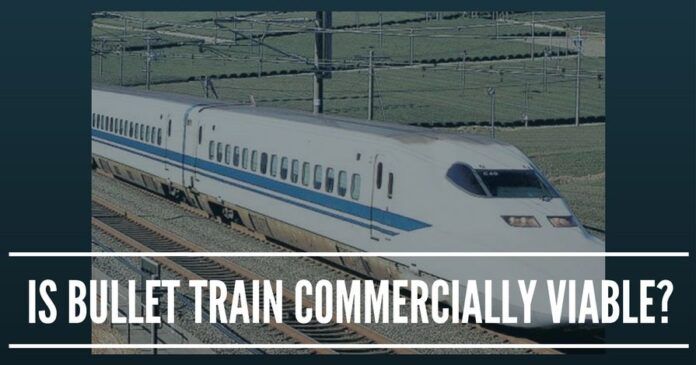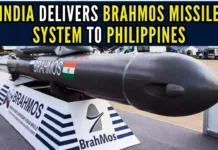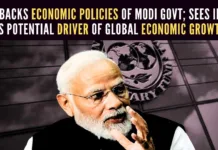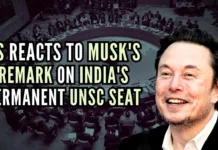
This project will increase the economic activity in the Mumbai – Ahmedabad region
There has been criticism in mainstream and social media that Bullet Train Project is commercially unviable, and that Modi has purchased a white elephant from Japan. While some of the criticism is ideological, most of it is based on a Research Publication titled, “Dedicated High-Speed Rail Network in India: Issues in Development”, authored by Prof. G Raghuram and Prashanth D Udayakumar of IIM, Ahmedabad.
This project will help us announce India’s coming of age to the world in one more way, and perhaps even help us export certain projects based on this learning to other developing countries in future.
Let’s study this report in some detail: Plying between Mumbai and Ahmedabad with 1,000 to 1,600 seating capacity, each rapid train will cover the 534 km distance in 2 hours & 8 minutes (with 2 intermediate stops) and slower train in 2 hours & 58 minutes (with 12 stops). This compares very favourably with air travel when you reckon the time overheads in air travel, which will not be there with Bullet Train since it will have railway stations at more central places in each city. To start with, 35 daily services will operate both ways (70 singles). National High-Speed Rail Corporation (NHSRC), a special purpose vehicle, will implement the project.
Regular trains, bus and cars/ taxis cover this distance in about 7 hours. So, most air & taxi travellers, many upper-class train travellers, and some bus travellers may prefer Bullet Train options as it will save time, especially as it will halt well inside cities.
Assumptions made in the Report:
- Average fare (weighted average of peak & lean hour fares): Rs 1,500 at today’s rate
- Operating Ratio (ratio of operating costs to revenue): 20% (min); 40% (max)
- Ignore Inflation (i.e., ignore increase in revenue & operating cost over time)
(Reason: Inflation will impact revenue and operating cost almost uniformly. The average fare throughout the 50 year period is assumed to be Rs 1500; hence this is the NPV of fare of all future years. Consequently, Revenue is Discounted Cash Flow (DCF) value, adjusted for time value of money. Since Operating Ratio is a % of the Revenue, Opex is also DCF value, adjusted for time value of money. Railway assumes the fare from Mumbai to Ahmedabad by the Bullet Train at Rs 3,000, 50% more than First Class AC ticket by normal train.)
- Balance 60-80% of revenue as in 2022 (after providing for 20-40% Opex) will be just adequate to pay EMI and 8% IRR to the Government. This assumption needs a serious relook.
(While revenue will keep increasing over the years due to increasing traffic, EMI on Yen loan & Rupee Investment financing cost will be constant over the next 50 years, whose DCF adjusted value will keep coming down phenomenally over the 50 year period. Consequently, profit (by DCF) to Indian Government after providing for Opex and Yen loan servicing will be huge, more than the 8% IRR assumed.) This has not been factored in the Report and needs a relook, as this makes a huge difference to the profitability.
- Ignore Exchange rate risk
(It can’t be assessed with any reasonable level of certainty. But we may remain conscious of the upside and downside risks. The yen appreciated 80% vis a vis Indian Rupee (INR) in the last 10 years, @ 6% CAGR. But, INR appreciated against Yen by about 20% in the last 5 years, @ 3.5% CAGR. Recency may be given a higher weight than a history of the long past. Both these past trends may have limited relevance for the next 50 year period, which is unknown.)
- Annual traffic required is constant at 32 Million (88,000/day) to 43 Million (118,000/day) to make this project viable: This assumption needs a serious relook.
(In reality, this number need not be as high, to start with, but can keep increasing over time continuously, subject to capacity limitation.)
- Revenue is assumed to kick in only after 5 years from today, interest has to be paid during Principal Repayment Holiday of 15 years, and Interest on Yen Loan is 0.1%.
To provide 8% IRR to the Government and service the Yen loan EMI, at an Average Fare of Rs 1,500 (at today’s rate), Opex as 75% of the revenue (against 20%-40% assumed in the Report), and discounting cash flow at 5% per year, we need just 24,000 daily passengers (as of today, increasing to 136,000 in 50 years, assuming 5% traffic increase YOY), NOT 88,000 to 118,000 uniformly as quoted in the report, not even 36,000/day as per the Government projections:
https://en.wikipedia.org/wiki/Mumbai%E2%80%93Ahmedabad_high-speed_rail_corridor
Operating Ratio needs some basis. So, figures from the latest Japanese experience, which goes up to 59% maximum, have been used; a much higher figure of 75% is used:
https://www.princeton.edu/~ota/disk3/1983/8327/832705.PDF
We are likely to do far better, generating far higher IRR than 8% on Indian Government’s investment, income and expenses adjusted for current value of money using DCF
Since Indian costs are much lower compared to Japan (mainly HR costs), a figure 40-60% may have been comfortably justified, though.
As a result of mainly these changes in the model, the Bullet Train Project is very viable, surely not unviable as reported widely in media.
These projections are more conservative than assumed in the report; we are likely to do far better, in reality, generating far higher IRR (over the life of the project) than 8% on Indian Government’s investment (anything between 8% and 80%, yes 80%), income and expenses adjusted for current value of money using DCF, for the following reasons:
o Average fare could be higher than Rs 1,500 (at today’s rate)
o Traffic is likely to be more than 24,000 at today’s demand
o Traffic may increase at a higher rate than 5%
o Operating Ratio is likely to be much lower than 75%
o The % increase in revenue could be higher than the % increase in operating cos
Most of us may not know that EMI on Rs 89,000 Crore Yen loan for 50 years at 0.1% Interest Rate is the same as EMI on Rs 26,700 Crore Yen loan at 6% Interest. This mainly is what makes our project viable.
Is this the best Project for India for this size of investment? No, but since 80% of the project cost is given as loan at 0.1% Interest by Japan, which it would not give otherwise, we should only evaluate whether this Project is a viable investment for the Government. And we see that it will give 8% IRR at just 24,000 passengers/ day, which will happen very easily. So, the Project is viable.
Most global Railways, including High-Speed Trains, don’t operate profitably, and yet these are considered national infrastructure.
Some people misleadingly argue that the Bullet Train has to make 100 trips a day to be viable; there will be multiple trains making 100+ trips over the day.
The main reason for the wrong notion of unviability of the project is because this Report did not take into account the fact that revenue will keep increasing due to increasing traffic (assuming just 5% growth YOY for 50 years, starting with just 12,500/ day) whereas annual Yen EMI payment and notional (or real) pay back to Government will not increase over time, if we ignore inflation effect on both income and expenses/ payouts. This differential will keep increasing over the 50 years.
Additionally, this project will increase the economic activity in the most economically happening region Mumbai – Ahmedabad region, strengthen our relationship with Japan, provide us access to technologies that we can use to improve our regular railway operations, help us announce India’s coming of age to the world in one more way, and perhaps even help us export certain projects based on this learning to other developing countries in future.
Long and short: Bullet Train is not only financially viable but will also provide additional benefits; so, it is a good investment in India’s interest. I’m willing to be proved wrong, based on facts and computations.
Note:
1. Text in Blue points to additional data on the topic.
2. The views expressed here are those of the author and do not necessarily represent or reflect the views of PGurus.
- How BJP can get 33%+ vote share in TN - April 1, 2024
- A transparent, equitable electoral funding alternative - March 19, 2024
- How TN BJP can come to No. 1 or No. 2 in 2024 LS polls - January 11, 2024











[…] Incidentally, this is similar to the Bullet Train Project. Please read my article on it at: “How Bullet Train Is Commercially Viable” […]
Good challenge “I’m willing to be proved wrong, based on facts and computations”